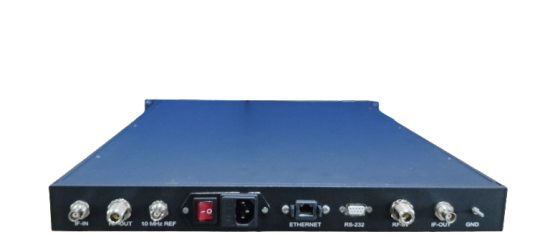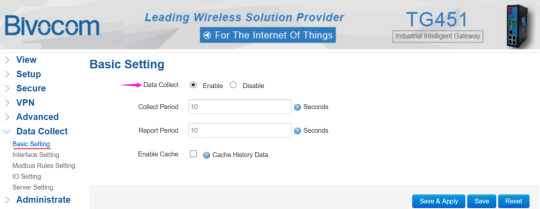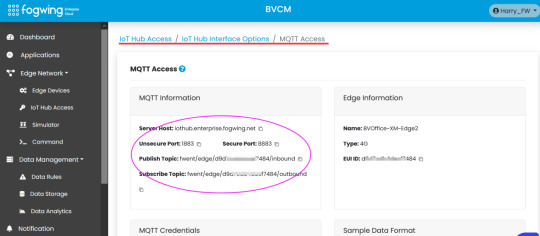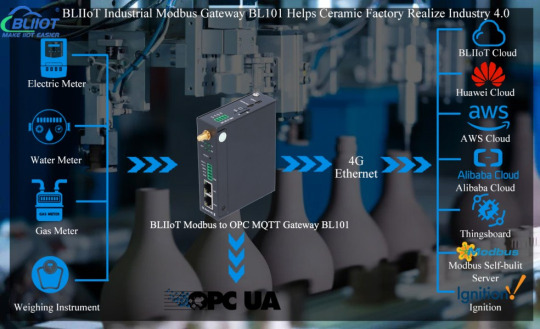#RS232 to Ethernet Converter
Explore tagged Tumblr posts
Text
Transforming Legacy Connectivity: The Power of RS232 to Ethernet Converters
In a rapidly evolving digital landscape, legacy systems need a modern touch. Case Communications' RS232 to Ethernet Converters breathe new life into outdated RS232 connections, enabling seamless integration with contemporary networks. These converters transform traditional serial data into Ethernet signals, ensuring reliable and fast communication across diverse applications. Whether it's industrial automation or point-of-sale systems, this innovative solution bridges the gap between old and new technologies, enhancing efficiency and performance. Embrace the future while preserving the past with Case Communications' cutting-edge RS232 to Ethernet Converter. Visit at https://factofit.com/transforming-legacy-connectivity-the-power-of-rs232-to-ethernet-converters/
1 note
·
View note
Text

ARM Embedded Industrial Controller BL370 Applied to Smart Warehousing Solutions
Case Details
The ARMxy BL370 series embedded industrial controller can fully leverage its high performance, flexible scalability, and industrial-grade stability in smart warehousing solutions. Below is an analysis of its typical applications in smart warehousing scenarios, based on the features of the BL370 series.
Application Scenarios of BL370 in Smart Warehousing
Smart warehousing involves automated equipment (such as AGVs, robotic arms, and conveyor belts), sensor networks, data acquisition and processing, and connectivity with cloud platforms. The following features of the BL370 series make it highly suitable for such scenarios:
High-Performance Computing and AI Support: Equipped with the Rockchip RK3562/RK3562J processor (quad-core Cortex-A53, up to 2.0GHz) and a built-in 1TOPS NPU, it supports deep learning frameworks like TensorFlow and PyTorch, enabling image recognition (e.g., barcode scanning, shelf item detection) or path optimization in warehousing.
Rich I/O Interfaces: Supports 1-3 10/100M Ethernet ports, RS485, CAN, DI/DO, AI/AO, and other interfaces, allowing connection to sensors, PLCs, RFID readers, etc., for cargo tracking, environmental monitoring (e.g., temperature and humidity), and device control.
Flexible Scalability: Through X-series and Y-series I/O boards, users can configure RS232/485, CAN, GPIO, analog inputs/outputs, and more to adapt to various warehousing equipment (e.g., stackers, conveyors).
Communication Capabilities: Supports WiFi, 4G/5G modules, and Bluetooth, suitable for real-time data transmission to Warehouse Management Systems (WMS) or cloud platforms for inventory management and remote monitoring.
Industrial-Grade Stability: Operates in a wide temperature range of -40 to 85°C, with IP30 protection, and has passed electromagnetic compatibility and environmental adaptability tests, suitable for warehousing environments with potential vibration, dust, and temperature fluctuations.
Software Support: Pre-installed with BLloTLink protocol conversion software, supporting protocols like Modbus, MQTT, and OPC UA, it seamlessly integrates with WMS, ERP, or mainstream IoT cloud platforms (e.g., AWS IoT, Alibaba Cloud). Node-RED and Docker enable rapid development of warehousing automation workflows.
Specific Application Cases
Here are several typical applications of the BL370 in smart warehousing:
1. AGV Navigation and Control
Function: The BL370 serves as the core controller for AGVs (Automated Guided Vehicles), handling navigation algorithms, sensor data fusion (e.g., LiDAR, ultrasonic sensors), and path planning.
Implementation:
(1)Uses the NPU for real-time image processing (e.g., landmark or obstacle recognition).
(2)Communicates with motor drivers via CAN or RS485 to control AGV movement.
(3)Y-series I/O boards (e.g., Y95/Y96) support PWM output and pulse counting for precise control and positioning.
(4)4G/5G modules enable real-time communication with the central scheduling system.
Advantages: High-performance processor and flexible I/O configurations support complex navigation algorithms, while wide-temperature design ensures stable operation in cold storage environments.
2. Cargo Tracking and Inventory Management
Function: Real-time cargo tracking via RFID or barcode scanning, with data uploaded to WMS for inventory management.
Implementation:
(1)X-series I/O boards (e.g., X20) provide multiple RS232/485 interfaces to connect RFID readers or barcode scanners.
(2)BLloTLink software converts collected data into MQTT protocol for upload to cloud platforms (e.g., Thingsboard).
(3)Node-RED enables rapid development of data processing workflows, such as inventory anomaly alerts.
Advantages: Multiple interfaces support various device integrations, and protocol conversion software simplifies integration with existing systems.
3. Environmental Monitoring and Energy Management
Function: Monitors warehouse environmental conditions (temperature, humidity) and energy consumption data to optimize energy use and ensure proper storage conditions.
Implementation:
(1)Y-series I/O boards (e.g., Y51/Y52) support PT100/PT1000 RTD measurements for high-precision temperature and humidity monitoring.
(2)Data is transmitted to an Energy Management System (EMS) via Ethernet or 4G.
(3)BLRAT tool enables remote access for maintenance personnel to monitor environmental status in real time.
Advantages: Wide voltage input (9-36VDC) and overcurrent protection ensure stability in complex power environments.
4. Automated Equipment Control
Function: Controls conveyor belts, stackers, robotic arms, etc., for automated sorting and storage.
Implementation:
(1)X-series I/O boards (e.g., X23/X24) provide DI/DO interfaces for switching control and status detection.
(2)Supports Qt-5.15.10 for developing Human-Machine Interfaces (HMI), output via HDMI to touchscreens for operator monitoring.
(3)Docker containers deploy control programs, improving system maintainability.
Advantages: Modular I/O design enables quick adaptation to different devices, and the Linux system supports complex control logic.
Advantages of Smart Warehousing Solutions
Using the BL370 series for smart warehousing solutions offers the following benefits:
Modular Design: SOM boards and I/O board combinations meet the needs of different warehouse scales and equipment, reducing customization costs.
High Reliability: Passes EMC tests (ESD, EFT, Surge, etc.) and environmental tests (-40 to 85°C, vibration, drop), ensuring long-term stable operation.
Rapid Deployment: Pre-installed BLloTLink and BLRAT software support mainstream protocols and cloud platforms, shortening system integration time.
Development Support: Rich development examples (Node-RED, Qt, Docker, NPU, etc.) reduce secondary development complexity, ideal for rapid prototyping and customization.
Implementation Recommendations
Hardware Selection:
(1)For scenarios requiring high-performance computing (e.g., vision processing), choose SOM372 (32GB eMMC, 4GB LPDDR4X, RK3562J).
(2)For multi-device connectivity, select BL372B (3 Ethernet ports, 2 Y-board slots).
(3)For cold storage applications, choose SOM370/371/372, supporting -40 to 85°C.
Software Configuration:
(1)Use Ubuntu 20.04 and Qt-5.15.10 to develop HMI interfaces for enhanced user interaction.
(2)Leverage BLloTLink for protocol conversion with WMS/ERP, recommending MQTT for efficient communication in low-bandwidth environments.
(3)Deploy Node-RED to design automation workflows, such as triggers for cargo inbound/outbound processes.
Network and Security:
(1)Use 4G/5G modules to ensure real-time data transmission, with BLRAT for remote maintenance.
(2)Regularly update the Linux kernel (5.10.198) to address potential security vulnerabilities.
Testing and Validation:
(1)Conduct electromagnetic compatibility and environmental tests before implementation to ensure stability in actual warehousing environments.
(2)Simulate high-load scenarios (e.g., multiple AGVs working collaboratively) to test system performance.
Conclusion
The ARMxy BL370 series embedded industrial controller, with its high-performance processor, flexible I/O expansion, robust software ecosystem, and industrial-grade reliability, is highly suitable for smart warehousing solutions. Whether for AGV control, cargo tracking, environmental monitoring, or automated equipment management, the BL370 provides efficient and stable support. Through its modular design and rich development resources, users can quickly build customized smart warehousing systems, improving efficiency and reducing operational costs.
0 notes
Text
Why Your Business Should Use a CAN Bus to Ethernet or RS232 Converter
Discover why your business needs a CAN Bus to Ethernet or RS232 converter with BuenoElectric. Enhance communication, streamline operations, and improve device connectivity. Trusted in the USA for reliable and efficient solutions.
0 notes
Text
Understanding Programmable Power Supplies For LED Light Panels

LED light panels are extensively utilized across various industries like photography, videography, architectural lighting, and smart home technologies, owing to their efficiency, longevity, and adaptability. To achieve optimal functionality, however, these panels necessitate meticulous power management. Programmable power supplies offer the capability to modify voltage, current, and brightness levels to accommodate diverse applications. This article will delve into the operation of programmable power supplies, their primary advantages, and guidance on selecting the appropriate model for your LED panel configuration.
What is a Programmable Power Supply?
A programmable power supply is a sophisticated electronic device that allows users to manage and modify output voltage, current, and occasionally power through software, control panels, or communication interfaces such as USB, Ethernet, or RS232. For LED light panels, this technology provides precise control over brightness and colour temperature, ensures consistent performance with stable power output, enhances energy efficiency by avoiding LED overdrive, and improves safety with integrated protections against overheating and voltage surges.
How Programmable Power Supplies work
In contrast to conventional fixed power supplies, a programmable power supply adjusts its power output dynamically based on user-defined parameters or external control signals. The process begins with input power management, converting AC from a wall outlet or DC from batteries or solar panels into the necessary voltage and current. Internal microcontrollers and switching circuits regulate and adjust the output according to user specifications. Users can interact with the power supply through on-device buttons and LCD displays, remote software applications on computers or mobile devices, and automation scripts for smart home integration. Ultimately, the regulated power is supplied to the LED light panel, ensuring uniform and reliable illumination.
Types of Programmable Power Supplies for LED panels
Programmable power supplies are categorized into three primary types: Constant Voltage (CV) Power Supplies, which maintain a stable output voltage (such as 12V or 24V) while allowing the current to vary, making them suitable for LED strips and panels equipped with integrated drivers; Constant Current (CC) Power Supplies, which deliver a fixed current (for instance, 700mA or 1A) while permitting the voltage to change according to the LED load, ideal for LEDs lacking internal current regulation; and Hybrid (CV/CC) Power Supplies, which merge both functionalities, providing flexibility for various LED applications.
Applications of Programmable Power Supplies for LED panels
Photography and videography studios
In photography and videography studios, programmable power supplies facilitate consistent lighting with flicker-free operation, enabling precise adjustments to brightness and colour temperature for diverse shots, and allowing remote management of multiple LED panels for greater adaptability.
Smart home and architectural lighting
Smart home and architectural lighting can be enhanced through the automation of brightness and colour transitions based on the time of day, integrating LED panels with motion sensors or voice-activated systems for effortless control, and promoting energy efficiency in both residential and commercial environments.
Horticulture and grow lights
Horticulture and grow lights necessitate accurate adjustments of light intensity for various plant growth stages, the capability to fine-tune wavelengths for specific plant types, and the enhancement of crop yields while reducing energy usage, rendering programmable power supplies vital for effective indoor agriculture.
Medical and laboratory applications
In medical and laboratory applications, programmable power supplies are crucial for ensuring consistent and regulated light output in surgical environments, providing precise programmable settings for UV sterilization, and maintaining stable lighting conditions essential for accurate microscopy and diagnostics.
A programmable power supply is a crucial element for individuals aiming to enhance the performance, efficiency, and versatility of LED light panels. This is applicable across various industries like photography, smart home configurations, horticulture, and industrial applications. These power supplies provide precise control, energy efficiency, and increased lifespan. By comprehending their functionality and choosing the right power supply for your LED application, you can attain exceptional lighting quality while maintaining safety and durability. Miracle Electronics offers efficient and reliable programmable power supply for LED light panel in India, specifically designed to meet a wide range of lighting requirements.
Resource: Read more
0 notes
Text
IF To L Band Converter | defel technologies
Introducing the Defel IFL: A Next-Generation, Fully Synthesized L-Band Up and Downconverter Offering Cost-Effective IF Interface Solutions at 70/140 MHz.
Key Features of IFL 2010: ➡ IF: 70±18 MHz, 140±36 MHz ➡ RF: 950 -2000 MHz ➡ Upconverter & Downconverter in Single 1U Chassis. Rack Mountable ➡ Input Power: Input Power: 110V-230 V AC/50 Hz ➡ Upconverter Output Power Range: 0 to -40 dBm ➡ Downconverter Input Power Range: 0 to -70 dBm ➡ Spurious: 40 dBc ➡ Humidity: 95%, Temperature: -20 to +65 º C ➡ M&C: SNMP, Ethernet, RS232/422
To learn more about IFL 2010 and how it can benefit your SATCOM operations, visit our website https://defel.in/ or contact our team today!


#IFL2010#satcom#innovation#technology#newproduct#groundstation#space#defel#ifl#isro#bhel#drdo#makeinindia#startupindia#meity#inspace#startupkarnataka#bengaluru#satellitecommunication
1 note
·
View note
Text
CAN BUS Haberleşme Çözümleri - GelecekBT
#can 2.0#CAN BUS#CAN OPEN#CAN FD#CAN BUS FIBER CONVERTER#CAN BUS TCP/IP Converter#canbus rs232#canbus rs485#canbus usb converter
1 note
·
View note
Text
#s2emodule #serialtoethernet #ethernet #wiznet #ethernetmodule #w7500P #WIZ110SR #WIZ750SR #s2emodul #ethernetic #wiznetian #ethernetchip #arduino #esp32 esp8266 #ethernet #eth #wiznetchip #w5500 #ethernet #rs485 #modbusrtu #modbus #serialtoethernet #rs232 #canbus
0 notes
Text
What is a rs-232, RS232 to rs422 converter, rs232 to ethernet, serial communications connecting devices
ICL3221 Series 250 kbps 15 kV RS232 5.5V Transmitter/Receiver - TSSOP-16
#Renesas#ICL3221EIVZ-T#Signal Interface#RS 232#what is a rs-232#RS232 to rs422 converter#rs232 to ethernet#serial communications connecting devices#Multiple receivers#RS232 to usb#rs232 pinout#rs232 to usb adapter#rs232 programming
1 note
·
View note
Text
LAN/RS485/RS232 PLC/DDC Modbus TCP RTU to Profinet Gateway for Process Automation Industries
The BL122 protocol converter is an industrial Ethernet gateway with Ethernet ports and RS-232/485 serial ports. Beilai BL122 protocol converter is used for converting Modbus RTU, Modbus TCP to PROFINET communications.
BL122 Modbus to PROFINET protocol conversion gateway enables seamless integration of Modbus devices into a PROFINET network. This gateway supports Modbus RTU, Modbus TCP converts data for communication with PROFINET devices.
It facilitates real-time data transfer, configuration flexibility, and industrial-grade reliability. Ideal for industrial automation, the gateway enhances system flexibility and scalability, ensuring efficient data exchange and communication across diverse protocols and devices.
0 notes
Text

RS232 to usb, rs232 converter, rs232 to ethernet, rs232 program

0 notes
Photo

Industrial RS232/RS485 to Ethernet Converter
This gateway is an industrial-strength RS232/RS485 to Ethernet converter that allows a bi-directional transparent data transmission between RS232/RS485 devices and an Ethernet RJ45 port. The gateway is a great solution for industrial control systems that need an expansion to IIoT (Industrial Internet of Things)applications. The configuration is accomplished by means of a webpage.
https://copperhilltech.com/industrial-rs232-rs485-to-ethernet-converter/
0 notes
Photo

ICS-2400T Industrial 4-Port RS232/RS422/RS485 Serial Device Server is specially designed to convert RS232, RS422 or RS485 serial communication to Industrial Fast Ethernet networking so as to extend the network distance efficiently and inexpensively.
Upgrade Your Technology
Learn more: http://bbcpl.in
contact us : +91 78754 32180
Email: [email protected]
1 note
·
View note
Text
3 Steps to Build Your IoT Demo
Bivocom TG451 Industrial Iot Gateway
Want to know the environment condition of your greenhouse, server room, factory or substation of electricity from anywhere and anytime? Thanks to the IoT technology, your IoT concept can be easily realized.
Today, we’re going to show you how to build a simple IoT demonstration in just 3 steps by using an industrial temperature & humidity sensor, Bivocom industrial 4g IoT gateway TG451, and Fogwing cloud IoT platform.
Get Your IoT Hardware and IoT Platform Ready
1. An industrial temperature and humidity sensor can detect field conditions and convert it to digital signal. In our case, the sensor acquires the field environment temperature and humidity, transfer the data via RS485 interface following Modbus RTU protocol which is very common in IoT technology.
2. An industrial cellular IoT gateway or modem comes with RS485, and support protocols like Modbus RTU/TCP, JSON and MQTT. In this case, we use a Bivocom 4G IoT gateway TG451 to connect to the sensor via RS485, and acquire the data from sensor, convert it from Modbus to JSON, and transmit to a cloud MQTT server. For more details of industrial gateway TG451, please refer https://www.bivocom.com/products/iot-gateways/industrial-gateway-tg451/
3. A Cloud IoT platform. Fogwing is a feature-rich, and ease to use IoT platform, which supports MQTT protocols. Fogwing also provides visible dashboard and alarm trigger features. You may need to register a free account from https://enterprise.fogwing.net
Step 1,
Deploy the temperature & humidity sensor at place you plan to monitor, and then connect it to Bivocom TG451 gateway via RS485 port.
Step 2,
Configure the TG451 industrial iot gateway to get sensor data and upload to cloud server Fogwing. Bivocom TG451 provides user friendly Web UI for configuration. For initialization setup, please refer QSG(quick start guide) from Bivocom.
1) Login to the Web UI of TG451, enable the ‘Data Collect’ feature, and set the period of data collection and report period according to your demand.

2) Configure the relevant interface parameters, Bivocom TG451 provides RS232, RS485, Ethernet, DI/DO(relay). In our case, we use RS485 COM port to connect to sensor, set the relevant Baud rate, Data bit, and other parameters following sensor datasheet.

3) Configure the Modbus Rules at Web UI>>Data Collect>> Modbus Rules Setting, following the sensor’s Modbus map, set the Device ID, Function code, Register address, holding length (count), and other parameters (click “Edit” button for more settings), to get and calculate the correct Temperature and Humidity value accordingly.

4) We will get the MQTT access information from Fogwing platform after registere TG451 device on Fogwing portal.

Input the MQTT information of Fogwing on TG451 server setting, and set JSON format as platform requested.

Step 3,
After finished the TG451 gateway settings, the sensor data will be published to Fogwing platform periodically, access the dashboard of cloud IoT platform anytime and anywhere, all the real time data is under monitoried now.

Dashboard on Fogwing

Check the real time data on Data Storage

Visible Graph Display on Fogwing Dashboard
1 note
·
View note
Link
1 note
·
View note
Text
BLIIoT Industrial Modbus to MQTT OPC UA Gateway BL101 Helps Ceramic Factory Realize Industry 4.0

1. Industry 4.0 background
Today, as production lines become increasingly automated, industrial production capacity is rising sharply, and global overcapacity is no longer a new topic. Whoever can fundamentally solve the problem of overcapacity will occupy an important position in the future industry. Putting aside technical appearances such as "digital economy", "Internet of Things" and "cloud computing", you will find that the fundamental purpose of Industry 4.0 lies here - demand guides production, further enhances value creation, and minimizes costs and losses.
2. How does a ceramic factory realize the production process of Industry 4.0?
In order to realize Industry 4.0, the ceramic factory uses BLIIoT Modbus to MQTT OPC UA Gateway BL101 to collect data such as electric meters, water meters, gas meters, and weighing instruments in the ceramic factory, and uploads the data to the cloud through the MQTT protocol. In this way, real-time online monitoring and statistics of energy consumption can be facilitated, and equipment abnormalities can be found in time.
3. What is BLIIoT Modbus to MQTT OPC UA Gateway BL101 ?
Modbus Gateway BL101 is an industrial IoT gateway that converts Modbus RTU and Modbus TCP into Modbus TCP, OPC UA, MQTT, Huawei Cloud IoT, AWS Cloud, ThingsBoard Cloud, Alibaba Cloud, BLIIoT Cloud and other protocols.
BLIIoT Modbus Gateway BL101 adopts embedded Linux system, supports TSL, SSL encryption, provides 1 RS232/RS485 optional serial input, 1 power output, 2 Ethernet ports and 2 USB ports, and supports SIM card and SD card. The built-in 4G network or Ethernet access to the Internet has the characteristics of fast speed and low latency. It supports OpenVPN for secure data transmission.
4. Advantages of using BLIIoT Modbus to MQTT OPC UA Gateway BL101
Data Collection
BLIIoT Modbus to MQTT OPC UA Gateway BL101 collects data such as electric meters, water meters, gas meters, and weighing instruments in ceramic factories. BL101 can connect to instrumentation equipment and collect data through RS232/RS485, Modbus RTU/Modbus TCP protocols, and upload data to the cloud or OPC through MQTT protocol UA and so on. In this way, real-time online monitoring of data and statistics of energy consumption can be realized, and abnormalities can be found in time.
Cloud Monitoring
The BL101 gateway can support BLIIoT Cloud, AWSCloud, Huawei Cloud, Alibaba Cloud, Thingsboard, Modbus self-bulit Server, Ignition SCADA and third-party cloud platforms, and upload data to the cloud platform. Through cloud monitoring, ceramic factories can monitor energy in real time In order to achieve the purpose of energy saving and emission reduction, we can detect abnormalities in time and take measures to adjust them.
Statistical energy consumption
By collecting data such as electricity meters, water meters, gas meters, and weighing instruments, and uploading them to the cloud using the MQTT protocol, energy consumption statistics can be realized to understand usage conditions in real time. In this way, it is convenient for ceramic factories to understand the usage of various energy sources, find problems in time, and take measures to adjust them.
Government Subsidies
In order to promote the development of Industry 4.0, the government provides corresponding subsidies to enterprises that realize Industry 4.0 reform. Ceramic factories can also obtain government subsidies through reforms to reduce the cost of realizing Industry 4.0 and achieve benefits such as energy saving and emission reduction. Get great help for the development of the factory.
5.Conclusion
The BLIIoT Modbus to MQTT OPC UA Gateway BL101 can help ceramic factories realize Industry 4.0. Ceramic factories can monitor and count energy consumption in real time online, detect abnormalities in time, and take measures to adjust to achieve the goal of energy conservation and emission reduction. At the same time, government subsidies can be obtained to reduce the cost of realizing Industry 4.0.
More information about BLIIoT Modbus to MQTT OPC UA Gateway BL101: https://www.bliiot.com/modbus-gateways-p00305p1.html
0 notes